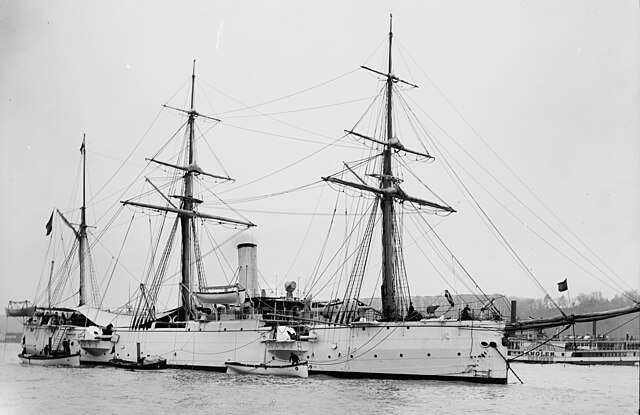Lapérouse was an unprotected cruiser, the lead ship of her class, built for the French Navy in the 1870s. The ship was intended to serve abroad in the French colonial empire, and was ordered to strengthen the fleet after the French defeat in the Franco-Prussian War. To allow the ship to cruise for long distances, she was fitted with a full ship rig to supplement her steam engine, and she carried a main battery of fifteen 138.6 mm (5.46 in) guns. Her top speed under steam was 15 knots.
Lapérouse in port, date unknown
Plan and profile sketch of the Lapérouse class
Lapérouse at Algiers on 2 August 1886
An unprotected cruiser was a type of naval warship that was in use during the early 1870s Victorian or pre-dreadnought era. The name was meant to distinguish these ships from “protected cruisers”, which had become accepted in the 1880s. A protected cruiser did not have side armor on its hull like a battleship or “armored cruiser” but had only a curved armored deck built inside the ship — like an internal turtle shell — which prevented enemy fire penetrating through the ship down into the most critical areas such as machinery, boilers, and ammunition storage. An unprotected cruiser lacked even this level of internal protection. The definitions had some gray areas, because individual ships could be built with a protective deck that did not cover more than a small area of the ship, or was so thin as to be of little value. The same was true of the side armor on some armored cruisers. An unprotected cruiser was generally cheaper and less effective than a protected cruiser, while a protected cruiser was generally cheaper and less effective than an armored cruiser, with some exceptions in each case.

SMS Gefion was an unprotected cruiser that had a thin protective deck; she served with the Imperial German Navy between 1895 and 1919.
Spanish Infanta Isabel in New York, May 1893





